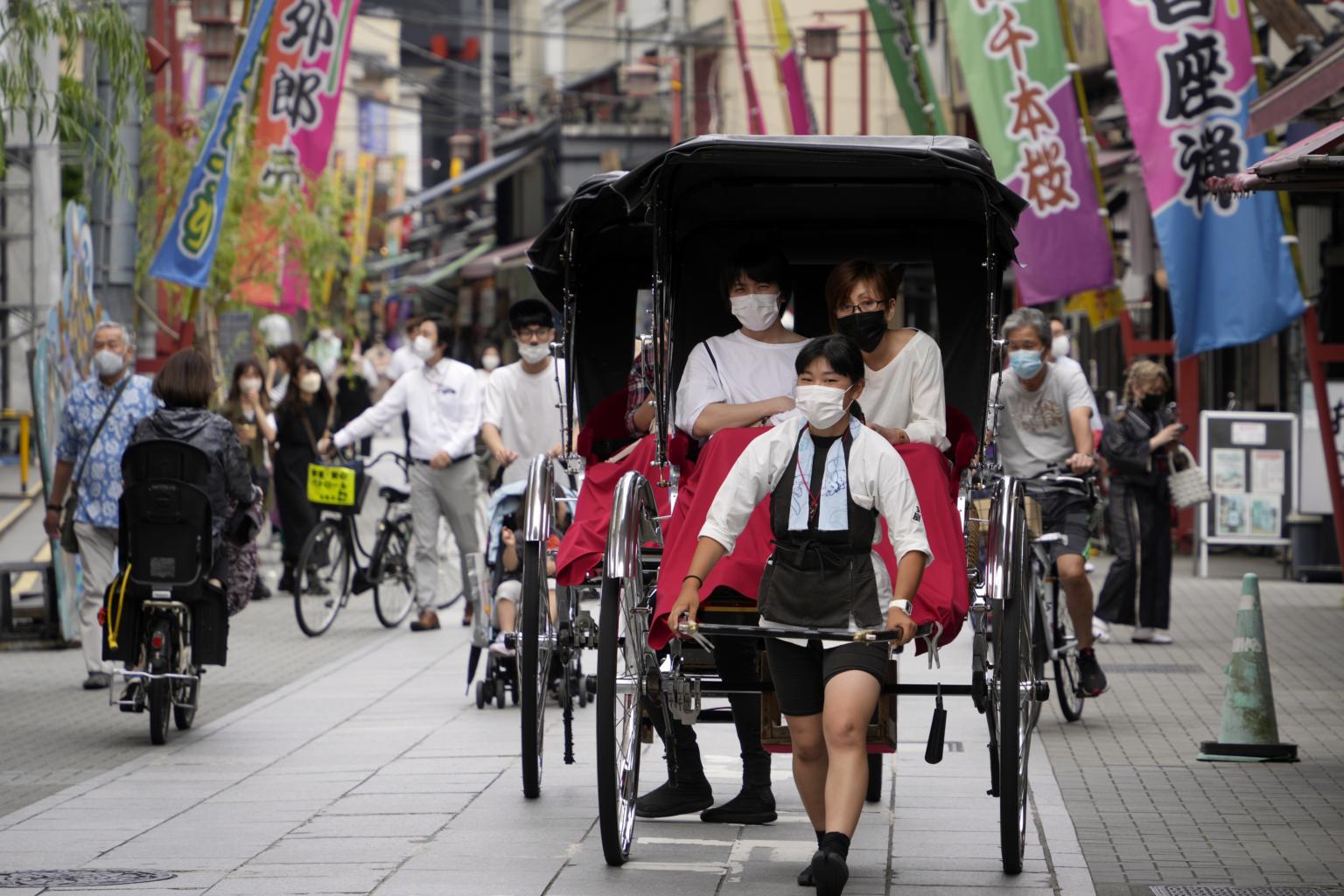Japan starts visa applications for foreign tourists on package tours
Sign up now: Get insights on Asia's fast-moving developments

The Japan Tourism Agency said it can take at least five working days for these visas to be approved.
PHOTO: EPA-EFE
Follow topic:
TOKYO - Japan reopened its borders to foreign tourists on package tours for the first time in two years on Friday (June 10), though this was only on paper as the first arrivals are expected only next week due to administrative procedures.
The government is now accepting registrations by travel agents through a new portal, where they must enter information of tour participants including passport numbers and accommodation details so as to apply for tourist visas.
The Japan Tourism Agency said it can take at least five working days for these visas to be approved.
On Friday, Japan's top business lobby and chambers of commerce issued a joint statement urging a further easing of border measures "to facilitate an environment where people, goods, money and digital technologies can move freely".
Tourism Minister Tetsuo Saito said: "We will make efforts to restore tourism demand by balancing anti-virus measures and socio-economic activities."
He added that the first tour group arrivals will be next week at the earliest.
From this month, travellers from 98 countries and regions - including the United States, China, South Korea and Singapore - can enter Japan without quarantine regardless of their vaccination status, so long as they produce a negative pre-departure polymerase chain reaction test.
The anticipated tourism reboot has drawn a surge in demand, travel agencies have said. But analysts see a missed opportunity - because of the strict guidelines on package tours - to inject foreign tourism spending into the economy, with domestic consumption tepid given rising prices.
The Japanese yen is now at its weakest in about two decades, making it considerably cheaper for foreigners than before the Covid-19 pandemic. The yen fell to 134.56 against the US dollar on Thursday, while one Singapore dollar was worth about 97 yen on Friday, 15 yen more than what it was valued at on the same day last year.
But the first step in the tourism reopening comes stacked with conditions, such as an entry cap of 20,000 daily arrivals - including returning residents.
Guidelines issued on Tuesday also said that tourists must buy travel insurance, be chaperoned by a tour guide "from arrival to departure", follow a strict itinerary and adhere to rules such as mask-wearing most of the time or face expulsion.
The burden is also on travel agencies to keep detailed records of their tours, right down to where tourists sat in restaurants and on transportation, so that quick measures can be taken to isolate close contacts if a positive Covid-19 case was found.
Tours need not be cut short if those affected are quarantined, the guidelines said, unlike a four-person tour from Thailand in a tourism trial last month.
Japan's business lobby Keidanren and chambers of commerce, including from Japan, the US and France, called for measures such as visa waivers for business travellers, along with the rapid resumption of individual travel "in line with other Group of Seven countries" and a complete lifting of the daily arrival cap.
Still, the government is erring on the side of caution ahead of a national Upper House election next month, with media surveys showing that many are wary of a sudden influx of foreigners.
Mr Raphael Mok, head of Asia country risk at Fitch Solutions, told The Straits Times that the economic impact was "unlikely to be significant".
Moody's Analytics senior economist Stefan Angrick added that lingering virus concerns and the cumbersome requirements on inbound travel mean that "tourist numbers (will) creep up rather than snap back".
Still, Japan's Tourism Ministry said in an annual White Paper on Friday that it was aiming for a "V-shaped recovery" to spark the depressed industry, including through such strategies as targeted campaigns at wealthy foreign travellers.
Japan, which hit a record 31.9 million visitors with a collective spend of 4.8 trillion yen (S$49.5 billion) in 2019, has set a target of 60 million visitors with a total spend of 15 trillion yen by 2030.
Only five airports now accept international flights - Haneda and Narita in Tokyo, Chubu in Nagoya, Kansai in Osaka, and Fukuoka - but Japan is expected to resume international flights to New Chitose Airport in Hokkaido and Naha Airport in Okinawa within this month.

